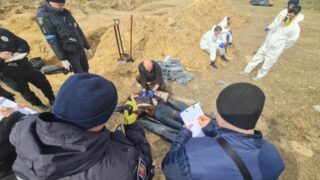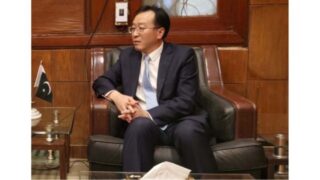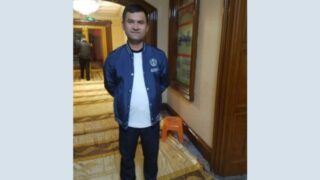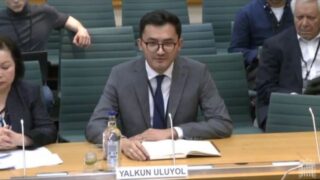Official denials fly in the face of social media proof to the contrary from the Communist Party faithful.
by Ruth Ingram
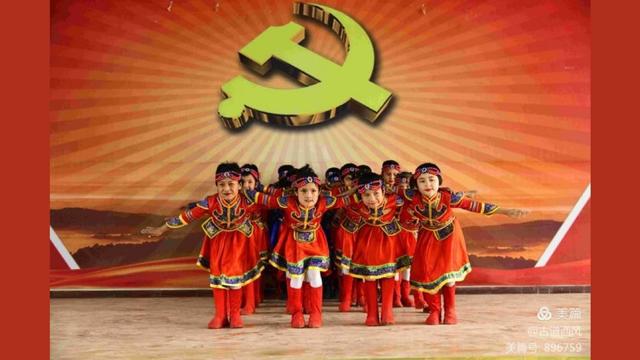

“Due to the continuous crackdown on the local area, the number of detentions is very large. Every day, hundreds of people are detained, arraigned, and met… we go back and forth between the prison area and the detention hall every day. Going more than 400 meters, walking more than 30 kilometers every day, both feet have blisters. Because I am too busy, I often miss meal times, and I can’t even eat. Due to the large number of detainees, the foul smell is mixed, disgusting and unbearable.”
Not the words of some crazed academic spreading lies and disinformation to bring China down, but those of one hapless “Comrade Li Chuanwei” whose volunteering for duty in Southern Xinjiang’s Cele (Qira, in Uyghur) County Detention Centre’s “most dangerous, hardest, labor-intensive, closest and most frequent detention post,” earned him, in his own words, “high mental pressure, heavy workload, and stomach pain; dizziness and other uncomfortable symptoms successively,” during his three month stint on one of Xi Jinping’s busiest so-called front lines on terror in 2017.
Regaling colleagues with his experiences on his return to his work unit in Xinjiang at a CCP rally to study and implement the spirit of the 19th National Congress of the Communist Party of China,” fellow “comrades” listen teary eyed to his tales of being “covered in dust all day long, his unbearable physical and mental exhaustion,” a feeling that his “body was hollowed out” and his “urge to be a deserter.”
They heard too that propelled by the “sacred mission,” and the “ardent expectations of leaders and comrades at all levels,” he “quickly calmed down, adjusted his mentality, overcame all difficulties” and “persisted, persisted, and persisted.”


In the hunt to discover the extent of the atrocities being meted out on the Uyghurs and Kazakhs in North West China, particularly since 2016, evidence gatherers have relied on satellite imagery, Bitter Winter’s on the ground video footage, extensive reports from Adrian Zenz, Vicky Xu, James Leibold, Jo Smith Finlay, a long list of eminent and motivated academics and campaigners, and a slow trickle of witness reports from camp survivors. Beijing has tarred these findings the “lies of the century,” and countered them at every turn as the work of “anti Chinese forces in the US and the West.”
But dismiss as they might Gulbahar Haitiwaji’s account of the fetid air in their over crowded cell and the rank odor from hundreds of unwashed and lice-ridden bodies, in her book “How I survived a Chinese Concentration Camp,” what might the Chinese authorities make of a similar story from the lips of uncomplaining patriot Li Chuanwei, whose own hell he vividly portrayed after just three months at the detention centre coal face? Could he be exaggerating too?
Academic Timothy Grose, drawing from almost exclusively open source Chinese language social media sites has compiled evidence of the atrocities as they unfolded, from the lips of the perpetrators themselves, unfiltered by Western media and not “taken hostage by geopolitics.”
The aim in his paper “Chinese social media sources leave no room for denial,” published by The University of Chicago Press’ “HAU: Journal of Ethnographic Theory,” is to let the facts speak for themselves as myriad county-level social media accounts and cadre blogs attest to, perhaps unwittingly, “how the party-state detained Uyghurs and Kazakhs without due process, held them in inhumane conditions, separated scores of children from their parents, and imposed policies to destroy ethno-religious identities.”
Comrade Li Chuanwei, simply by virtue of retelling his own experiences, could have had no idea that in broadcasting the truth about the camps during his stint on the front lines, he would be incriminating his bosses at the highest levels who insisted they had garnered the “ardent support of people from all ethnic groups,” and were set up and run “entirely in accordance with the law, to protect people’s lives.”
His own experience of the “disgusting and unbearable smell” of the detention centre, gave the lie to the image portrayed to Western journalists, as smiling young people danced and sang in front of the cameras for the world to see and, with the accounts of many like his, forms another body of irrefutable and self-incriminating evidence that has come straight from the horse’s mouth.
Grose’s appendix reads like a 1984-esque catalogue of a dystopian universe from another world. Accounts from participants in and observers of the Xinjiang carnage were often emotionless, unquestioning, and oblivious to the horror they were depicting. Some were moved to tears, imagining the pain they saw inflicted around them, but ploughed on regardless with the task, regarding the abuse as the unavoidable collateral of war, the people’s war on terror in Xinjiang. They all believed they were performing a noble duty.
The fact that almost half the adults had been detained from Koktiken village, in Mekit County, by August 2018, and almost 200 children had been left without one or two parents, was reported without comment in the “Rural Revitalization” plan for the area. Of the 47 left who could work, 38 had been transferred for employment, two of them outside the region.


In another post extolling the qualities of a leader, Secretary Sai who served in Tugeqi Village in the county of Onsu, was lauded eighteen months on from his arrival for taking on parental responsibility for two children who had been de facto orphaned by the state’s detention of their own parents.
Unsurprisingly resistant at first to “ideological counseling,” Sai’s persistence won them over, claims the report. Comrade Sai knew that “only through time can a child’s heart be healed and transformed,” as he visited every day, washed, and cooked for them, and persuaded them to accept the presence of a substitute “father.” The change in the children “allowed the villagers to witness the warmth of the Party and the government and won wide acclaim and affirmation from the masses,” forgetting to mention of course that Comrade Sai was only mopping up the fallout from his Party’s actions in the first place.
Mass incarceration and “stability work” starting in 2015 as part of the Xinjiang Aid Programme, despatched thousands of security personnel to the area to round up hundreds of thousands of Uyghurs and Kazakhs, in addition to more than one million cadres who were sent to live with and spy on Uyghur families in the “Pair up and become family” scheme.
“Chinese social media accounts celebrated these tireless cops and displayed detention numbers as if they were athletic statistics,” reports Grose. He archived scores of these reports before they were deleted, all celebrating “heroes” of the round ups who had detained countless thousands between them. Shanxi’s Wang Yongmao’s two thousand who had “harmed state security,” a deputy chief in Maralbeshi’s two hundred, a Qira County policeman’s between 24 and 200 people a day and reports from Kashgar and Khotan of more than fifteen percent of the population slated for incarceration.
A Jiangsu province officer noted there were six times as many inmates detained in Bay County than in his own. A newly built facility in the same area was “poorly equipped and plagued with blackouts and water outages,” Yengisheher’s cell capacity was over subscribed sixfold, and Baren Township’s eightfold.
The bright young team of students despatched from Xinjiang Agricultural University down to Karakash in the South of the region came to join volunteers from the area to help at the “Loving Heart Kindergarten” of Kuoyiqi Township. They arrived to “bring the warmth of spring” to the 450 children orphaned by the incarceration of their parents and to teach them how to help others like the Chinese folk hero Lei Feng.


The optimism of the band did little to assuage the grief of the 7-12 year olds. When asked how long it had been since they had seen their parents, “some children were choked up and speechless,” reported the volunteers, but the lure of new clothes, the story of Lei Feng and lessons on how to fold a quilt, soon caused their “big eyes” to “flash” excitedly. “Although the hands of the volunteers were not the hands of their parents in the children’s memory, they were as warm as their parents’ hands,” went the report of their visit. “While stroking their hair and feet, they also soothed their longing for their parents.”
Tales of traumatized children appeared in several blogs where doctors and psychiatrists had been sent to villages where large numbers had been corralled into orphanages. They were reported as being “withdrawn,” “tearful,” “angry and fearful,” and there were warnings that failures to address these mental health issues were storing up “psychological problems” for later life.
Social media blogs are also full of accounts of Party members billeted to Xinjiang from inner China who are bemused by the hostile reception they receive. One young woman reports being ignored, insulted and sidelined and despite her best efforts unable to win friends.
Another, billeted as part of a team to a particularly intransigent village, had to persuade Party members to remove their skull caps and shave off their beards. She became the first story teller in the newly opened Chinese traditional tea house and it was her job to introduce Mandarin door couplets for Chinese New Year festivities, ably assisted by Uyghur students from the local re-education camp, appropriately dressed in ancient Chinese garb who performed a hand dance entitled “Grateful Heart.”
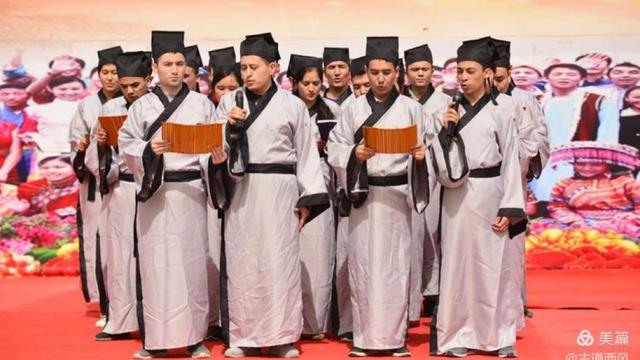

Cracking down on Illegal “Nikah” religious marriage performed by the mullah, was part of her remit as was launching a “final charge” in 2018 against “the most stubborn of the stubborn” who had not “surrendered” yet.
As a sweetener, in order to “improve the lives” of those who traditionally sit on the floor around low tables, the Party work team purchased 57 sofas for families “with difficulties.”
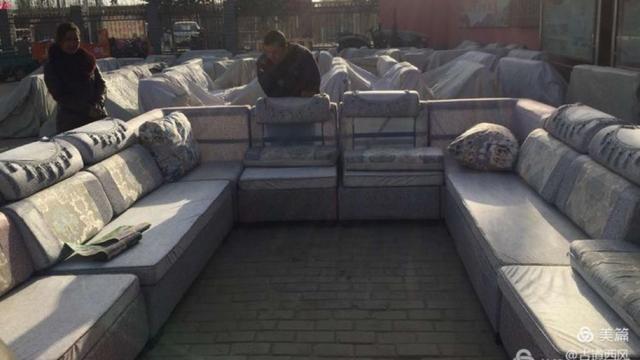

For her efforts, the blogger was promoted to deputy secretary of the Party Committee of the department, and was commended by the autonomous region as a “Communist Party Member who has made outstanding contributions to the anti-separatist struggle.” She was praised by team leader Feng Zhiliang, for her efforts that effected a “reborn transformation” in the hearts of some of the villagers.
Party dogma holds that Uyghurs are filled with “ideological viruses” and an “epidemic” of religious extremist ideas. The medical model of “cure” and “treatment” was used in the earliest stages in 2014 to isolate the problem and formulate a plan for treatment and eradication. Hundreds of doctors in Aksu jointly launched an initiative to use “ten prescriptions” to “de-extremize.”
“We should take the religious extreme thought virus under the microscope, so that it can show its original form, so that people can recognize its ferocious and horrible true face. We should show up the scalpel, perform surgery on it, dig out the lesion, and kill the virus,” they were urged. This model that made its way to the highest echelons of state power, even to Xi Jinping himself, has been used to justify the detention of up to three million Uyghurs, and identified seventy-five signs of extremism, some as innocuous as wearing a long skirt or sporting a beard.
“The CCP’s mass extrajudicial detentions of Uyghurs and Kazakhs, intrusive surveillance, and attacks on innocuous expressions of ethno-religious identities are irrefutable,” finds Timothy Grose.
His trawling of hundreds of social media sites, some of which have since been deleted, adds weight to the growing body of evidence not only that the atrocities were carried out in broad daylight, but that very often the perpetrators had been so convinced by the anti-Uyghur propaganda woven together in the years preceding the clampdowns that they firmly believed that what they were doing was right, not only for the Motherland, but for the Uyghurs themselves; that Uyghurs were somehow less than human, their religion a fatally flawed illness and their culture deserving of eradication and replacement with something more civilized—something more Chinese.


